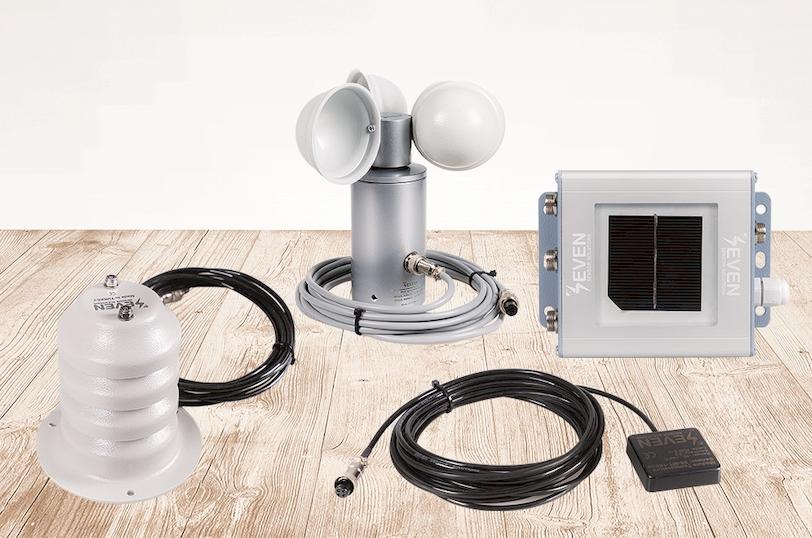IRRADIANCE SENSOR TEST
Irradiance Sensors are used to measure the value of radiation coming from the sun in W/m2.
The Irradiance Sensor needs to be calibrated and tested after the production is completed.
Calibration is a series of measurements used to measure the accuracy, determine and record deviations of other test and measuring instruments using a measurement standard or system of known accuracy under specified conditions.
The calibration process is made with a calibrated reference sensor, which is obtained from the Fraunhofer Institute. There are two determined ways to perform the calibration process as per standards. These are calibration with a sun simulator, and calibration under natural sunlight.
The calibration process is carried out under natural sunlight between 11:00 am to 1:00 pm; at to the AM1.5g spectrum, under cloudless and windless weather conditions.
The reference sensor and test sensor are mounted on a flat, adjustable tilt bench and aligned at a 37° angle to the sunlight.
After a warm-up period of 15-30 minutes, data between the irradiance values of 800-1000 W/m2 are taken for the reference sensor and the test sensor. After receiving the data, the calibration value for the test sensor is calculated. According to the calibration value, our test sensor is calibrated. Then, the test is considered complete.
WIND SPEED SENSOR TEST (ANEMOMETER)
The Wind Speed Sensor is used to measure the speed of the wind and is scientifically known as an anemometer. Wind speed sensors need to be tested after production is completed. Wind speed tests are performed with a reference sensor whose calibration process has been completed by the General Directorate of Meteorology.
The calibration of our completed test sensors is made by comparing the read speed values for 5 specific pressure values. A transfer function is calculated according to the received data and “offset” and “slope” values are found from this transfer function. Our sensor is calibrated with the “offset” and “slope” values and thus the test process is completed.
AMBIENT TEMPERATURE SENSOR TEST
The Ambient Temperature Sensor is used to detect the temperature changes in the environment and it is produced with materials that are sensitive to temperature changes. There are 2 main types of this sensor which are DS18B20 and PT1000 sensors.
After the ambient temperature sensors production is completed, it is necessary to test them with the reference temperature sensor which has been calibrated before.
During this test, data is taken from both calibrated temperature sensor and the completed ambient temperature sensor for certain predetermined values and the test process is completed by evaluating this data.
MODULE TEMPERATURE SENSOR TEST
The Module Temperature Sensor is located in solar energy systems, and is used to measure the temperature changes of the panels. It is produced with temperature-sensitive materials.
There are 2 main types of this sensor which are DS18B20 and PT1000 sensors.
After the production of module temperature sensors is completed, it is necessary to test them with a reference temperature sensor which is calibrated previously.
With this test, data is taken from the module temperature sensor and the calibrated temperature sensor, which has been generated for certain values previously determined, and the test is completed by evaluating this data.
